Mak toj is alhuhu toj tot`eya notsas / Algunas costumbres
Anuncio
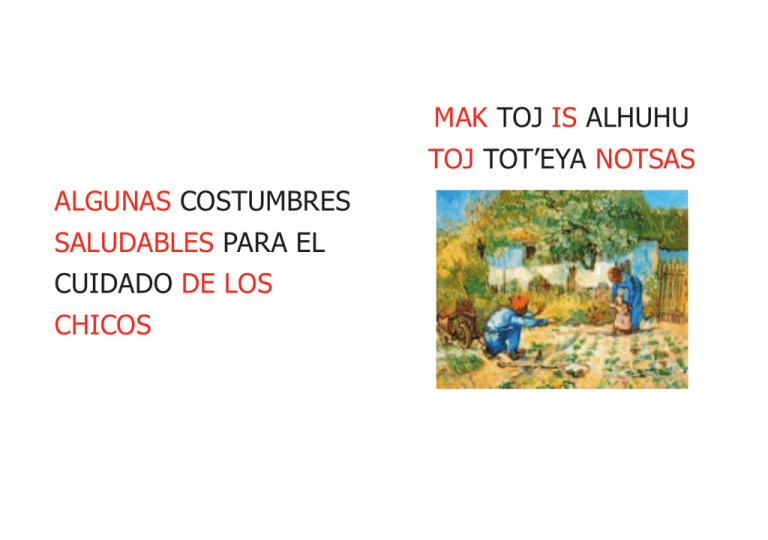
MAK TOJ IS ALHUHU ALGUNAS COSTUMBRES SALUDABLES PARA EL CUIDADO DE LOS CHICOS TOJ TOT’EYA NOTSAS Siempre es bueno visitar al médico para realizar un CONTROL DE SALUD. Por ejemplo, con los niños y mujeres embarazadas. En los CONTROLES DE SALUD también se puede aprender sobre situaciones que pueden ser riesgosas y qué cosas podemos hacer para seguir bien sanos y que las personas no se enfermen. El control de salud comienza desde antes del nacimiento, con el control de la embarazada, y continúa toda la vida. Toj is hop toj toyhuye luktul TOLHIYA HINLHI tolhateya. Hoteywuye notsas wet tsinai toj hicho’hen Toj TOLHIYA HINLHI hop toj is necha tohanej mak toj che ni isa che to enfwelmu wuche ka to enfwelmuya Toj tolhiya hinlhi tolhey toj necha toj tojiche wet tsina toj hichutsan, wet hanofwaj toj ihi, wet nichotey che hiche. 1 Al principio es importante ver que cada mes el niño en la panza crezca y se desarrolle bien, por eso los controles son cada mes. Al mismo tiempo, el médico le puede responder a la mamá algunas dudas, y revisar que ella se encuentre siempre bien. También, si hubiera algún problema, se puede observar más rápido y buscar la forma de solucionarlo. Cuando nace, el niño sano se controla los primeros dos o tres días de vida en el hospital. Después, cuando ya está con su familia en la casa, se controla a los diez o quince días y al mes. Luego de que cumpla el primer mes de vida, te pedirán de realizar un control de salud una vez por mes hasta que cumpla dos años. Tolhey toj necha toj lhiyahinlhi to n-yanej toj hanofwah is wet ha enfwelmuhi, hop toj tamenej yahinlhi pej toj mes nuj. Toj luktul iyahinlhi ifwenu atsina toj hichotsán is wuche ni isa. Wet che mak toj ni isa iyej wet luktul iahanej che tekwe lanoyij che ichesat. Hanofwaj toj necha iche tiyahinlhi lus (2) wuyche tales (3) fwalas toj iyej huspital. Wet toj titatéy lewet toyejche tiyahinlhi pej 10 wuyche 15 fwalas, wet hanofwaj che hiwen unu wela (1 mes). Wet toj hiwen unu mes wet to t’alhila che tiyahinlhi toj mes nuj pej, wet nichotey che hiwen lus añu (2 años). 2 a. Después de tener 2 años, puedes llevarlo menos seguido para control, lo mejor es cada 3 meses hasta que cumpla los 6 años. b. Es así a menos que el doctor te pida que lo lleves antes para control o para hacerle algún estudio. a. Toj yomhu lus añu hayip huefwi toj toihoney luktul, wet necha toihoney pej toj yomhu 3 mes wet yomey che hiwen 6 añu. b. Hop toj luktul ifwelhamu toj toyejche lahoney luktul chemet wet toj iyahinlhi toelh. c. El control de salud debe realizarse aunque la semana anterior haya consultado al médico por alguna enfermedad. d. Ir al control de salud es distinto de ir al doctor por enfermedad. c.Toj tolhiyahinlhi toyejche tiwuye tejcha taj yoma fwalas naji toj tolyenlhi. d. Toj tohuye luktul toj to enfwelmu wenlhamej ha hotewuye toj ka to enfwelmuya. 3 ¿QUÉ SE HACE EN EL CONTROL DE SALUD? a. Lo primero que hace el doctor es una historia clínica, que es una ficha con los datos del niño y su historia de salud familiar. b. Esto es muy importante para saber cómo va creciendo el bebé. c. Para escribir la historia clínica, el médico preguntará a la mamá sobre su embarazo, cómo han sido los embarazos anteriores, cómo fue el parto (normal o por cesárea), y dónde fue. d. Va a preguntar cuánto pesó el bebé al nacer, si tuvo algún problema cuando nació, querrá saber si estuvo alguna vez enfermo y le pedirá el certificado de vacunas o le enseñará para qué sirve. ETIWUYE TOJ TO HUYE LUKTUL CHEMET WET TOJ TOLHIYAHINLHI? a. 1° luktul yenlhi HISTORIA CLINICA. Hope ficha medica toj hanofwaj ka datos ihi wet toj yomei toloyaj toj iyeshen to lhukwey. b. Toj tohanej lhoya lhip toj is che toñhanej pahote hanofwaj e’hote tot’aipo. c. Toj to yenlhi HISTORIA CLINICA luktul ta yotn'ila toku ehote toj hichutsan fwalas toj tolhche , ehote toj lhos ihi wet e ihi toj ihi. d. Ta yotsana ehote toj ihi la ka peso hanofwaj toj nichotcho, ehoté toj nichotchó hanofwaj ha is wuyche ni isa. Wet t'eylok yahanej che iche toj enfwelmu p’anté, wet t’alhiyela certificado wakuna wet ichefwenhiyesha hat’ep isló. 4 e. Luego el doctor realizará el examen físico del bebé: hace control de peso, mide cuánto ha crecido, se fija cuánto mide su cabecita y estudia su cuerpito para asegurarse de que crece muy bien. Cuando termina el examen físico, es buen momento para hablar de cualquier duda sobre el niño y sus cuidados. ¡ES EL TURNO DE LOS PAPAS Y FAMILIARES! Siempre es bueno llevar la libreta sanitaria para que el doctor anote la fecha del control y las indicaciones o recomendaciones que hace hasta el siguiente contro. e. Wet luktul iyainhilhna hanofwaj: tawueya laka peso, meli ehote toj t’aipo, tiyahin lhetek ehote toj t’aipo, hoteywuye t’isan homkilak to yanhejche is toj lhichihelit. Toj tileyej toj tiyenlhi necha wuseyche to yemenlhi to mak toj tok nhanayej pa’hote, wet toj tot’eya notsas. WET NECHA LHUKWUEY TOJ TOYEJCHE HAYANEJ WET IŇHOJ! Toj is hop toj tichohey luktul liwleta sanitaria homkilak anotá lanhoyoy wet mak toj toyejche tiwuye. 5 También los papas pueden ir anotando en un papel todas las preguntas que le quieren hacer al doctor en el control. De ese modo nada se olvida, porque está todo anotado. Las indicaciones pueden ser qué vacunas debe recibir el bebé, y a veces son consejos buenos para tener en cuenta según la edad del niño: por ejemplo para evitar accidentes, para que no haya contagio de enfermedades y para lograr que el niño siga saludable. HAY QUE SABER QUE LAS VACUNAS SON UN CUIDADO IMPORTANTE! En el Hospital te dirán todo sobre la vacunación! IMPORTANTE! Se le puede dar más de una vacuna a los niños el mismo día. Luego de la vacunación el niño puede hacer cualquier actividad (jugar, bañarse, etc.) Si tu niño ha estado tomando remedios, puede vacunarse igual. Wet lhukwey ta toj yej che anotá nufw mak toj ta toyejche ta yotsana luktul. Toja hop toj ís ha ihichek tip’e t’at. Lanhoyoyná toj toyejche to wakuna hanofwaj wet hop toj toyanej pahote toj lhichiyelit. Hoteywuye tinuwahatlo mak che lon wet hoteywuye che toloyaj nilona, wet homkilak hanofwaj n'i lalhi. TOYEJCHE TOHAYEN WAKUNA MAK TOJ IS ALHUHU TOJ TOT’EYA NOTSAS!Toj iyej Huspital ifenlamu titson lafwapu MAK TOJ IS ALHUHU ! Hanofwaj tejcha titson unufwaj wawelhi. Wet toj tileyej toj titson hanofwaj wusey che ta chema mak chehope (y’akuy, inay). Che hanofwaj iyoyej to kachal, tejche titson hote iwuyey. 6 Si tuvo vómitos hasta media hora después de darse la vacuna Sabin, deberá dársela otra vez. Muchas vacunas pueden causar fiebre, enrojecimiento o hinchazón en donde se la dieron. Las vacunas Triple y Cuádruple a veces pueden provocar un “bultito” en el sitio de aplicación, y puede permanecer un tiempo. En el lugar de la vacuna BCG puede salir pus. Luego se forma una costra o cáscara. Después de unos meses se transforma en cicatriz. La zona de la BCG debe ser lavada con agua y jabón. Si aparecen otras cosas diferentes, consultá en el Hospital. ¿CUÁNDO HAY QUE CONSULTAR RÁPIDAMENTE AL MÉDICO?. Che titsonej wakuna Sabin wet tach’enlhi inachaj toj tileyej toj titsonej wakuna sabin ta to yejche toyachaj hu. Nufwu wakunas iche toj totojyutas tolhu, ichotlhi, wuche t’ikwa toj titson nahi. Wakunas Triple wet Cuadruple iche toj lanoyij tikwa ihi toj titson nahi. Wet wakuna BGC lanoyij iche toj amu nehu. Wet toj paj t’ohes nomche wet toj meses iñhoj n’ol layik. Wet BGC lanoyik wuseyche tileshej not wet fwawun. Che lawen mat toj nisa huyey huspital. TOJ IS HOP CHE MAK CHE HOPE LAKELTEY LUKTUL? 7 Toda mamá quiere que su bebé esté bien de salud. Si nos parece que algo no anda bien – como el bebé no puede decir si le duele algo o se siente mal-, hay que prestar atención a cómo se comporta y saber si está enfermo o no. Hay casos que debe verlos el doctor. Las mamás y los papás aprenden cuáles son esos casos SIEMPRE HAY QUE LLEVAR EL NIÑO AL MÉDICO SI: Respira mal: Cuando el niño respira rápido o despacio, se le hunde entre las costillas, hace ruido al respirar –como silbido u otros ruidos-, la piel se pone pálida o morada. Cacas flojas y líquidas. Diarrea Vómitos: Cuando vomita después de cada comida o tiene más de cuatro vómitos en una hora, o si tiene vómito en chorro. También si el vómito es entre amarillo y verde. Nufwu toku hat’ehilok lhos enfwelmu ischo toj ika che iche mak toj nisa -toj iyej hanofwaj ha ihichek ifwel mak toj oytaj toj iyej t’isan-. Tatoyejche tot’eya titets’an ha enfwelmu wuyche ka enfwelmuya. Iche mak toj luktul tatoyejche hiwen. Laku wet Lafwcha che yahanej mak toj ni isa toj iyej. TOYEJ CHE YAHONEY LUKTUL CHE HIWEN MAK TOJ NISA: Che ni isa toj t’iyal: che hanofwaj lofwel toj t’iyal wuyche yiwanlhaj, lasijlhiley nolchehen, wet y’ip toj t’iyal, wet itey t’oj. Layamek sati: Diarrea. Toj t’ekh tach’eilhi inachaj lhok, tach’eilhi kuatlu weses toj una hora. T’enche toj tach’eilhi. Lach’eyat watsanhi wet katehi. 8 Hay que llevarlo si el niño está adormecido todo el tiempo y no responde cuando queremos despertarlo. O si llora todo el tiempo. También si está siempre muy irritable o si se comporta raro. Si se desmaya, aunque después se despierte, siempre llevar al doctor Fiebre: Llevá al niño si tiene temperatura alta (muy calentito) o muy baja. En los casos de niños menores de tres meses, si tienen fiebre hay que consultar siempre. OTROS CASOS EN LOS QUE SE DEBE CONSULTAR AL MÉDICO: Si de pronto cae o sacude el cuerpo, o se le ponen los ojos en blanco o se pone rígido y deja de respirar un ratito. Si se dio golpes fuertes en la cabeza. Otros golpes fuertes también. Che hanofwaj hotoj netojlhi che lanumatlhi hanumhi.Wet tafwlhitlhaj. Wet henho hilhi wuyche itey lakey. Che welak hanofwaj, tafwli wet lhuj, toyejche lahoney luktul! To t’oj yutas : honey hanofwaj che wej toj t’oj yu. Notsas toj lalesas toyejche tikeltey luktul che tiwena toj t’oj y . CHE ICHE MAK CHEHOPE OTSANA LUKTUL: Che hanofwaj nichotka wet t’isan chet tilhi, wuyche tatelhuy pel hiche wet t’isan t’enhu wet hat’iyalhi. Che t’enche toj lhetek tan’ahinat, wet hote mak toj t’enche toj tan’ahej t’isan. 9 Si lo picaron animales venenosos o lo mordió un animal. Si tomó medicamentos solito, o líquidos para limpieza o insecticidas, o porque comió alguna planta o fruto venenoso. También hay que llevarlo rapidito si se tragó algún objeto. Si le aparecen manchas o lastimaduras en la piel. Dolor de panza (cólico) que lo hace llorar y decaer, estar cada vez más apagadito y débil. Si duele cuando le tocan la panza o la tiene dura aunque no esté llorando. Si el bebe tiene menos de tres meses llevalo al doctor siempre si: Si tiene fiebre o temperatura alta o baja. Che iche mak che hope yukuaj toj la ka wenenu ihi, wuyche tsowet yukuaj. Wuyche iyoyej tokachal wuemay wuyche iyoyej lawandina wet detergente wet hote atascha wuyche tefw halhouley wuyche lhay toj wenenu ihi. Wet hote tatoyej che la kelitsi che tim mak che hope. Che iche mak toj ilon iyej t’isan. Che lat’se oytajhi (cólico) wet tafwyejlhi, tsemajlhi, wet tak’efwiche. Wuyche oytaj toj totchaspe lats’e wet lats’e t’en. Wet hanofwaj toj ihi tales mes tatoyejche ahoney luktul: Che t’ojyu wuyche laka temperatura atufwpo wuyche nitufwapo. 10 Si toma la teta débilmente o no la chupa. Si cambia el color de la piel (pálido, morado, amarillo). Si está irritable o muy decaído (todo el tiempo como adormecido) Si el niño está muy blandito (como una muñeca de trapo) Si el cordón umbilical tiene mal olor. Hay que recordar bien lo que has visto cuando llevas a tu bebé al médico, así podés contarle bien lo que ha ocurrido. ES IMPORTANTE MIRAR COMO ES EL CHORRO DE PIS Y DE QUE COLOR ES LA CACA QUE HACE EL BEBE DEBEMOS ESTAR MUY ALERTAS CON LOS NIÑOS CON DIARREA, PORQUE PUEDE SER MUY GRAVE, ESPECIALMENTE EN LOS PEQUEÑITOS Che nit’enache toj tip wuyche nitipa. Che itey t’oj (chot, katepe) Che hanofwaj hotoj netojlhi che lanumatlhi hanumhi. Wet tafwlhitlhaj wet hanofwaj tak’efwiche( hote iwuyey muyeka toj sak’al). Che hanofwaj lats’ak lanij ihi. Tatoyejche lahanej mak toj iyej hanofwaj toj lahoney luktul, wet nech’a lafwenhu mak toj lawen. TOJ MAS IS HOP CHE LAYAHIN HANOFWAJ T’ELHE WET LAYAMEK EHOTE. TOYEJCHE LANUWAYHATLO NOTSAS TS’ELAS, HOP TOJ T’ENCHE TOLOYAJTSU. 11 COMO SABEMOS SI UN NIÑO TIENE DIARREA? Nuestro niño tiene diarrea cuando hace caca más veces de lo habitual o las cacas son más blandas y líquidas. El mayor peligro de la diarrea es que el cuerpo del niño pierda mucha agua y sales. Es mucho peligro si el niño hace muchas veces caca y mucha cantidad. Por lo tanto siempre que tenga diarrea debemos llevar al niño al hospital. Algunas veces la diarrea es peligrosa porque puede dañar otros órganos. La forma de detectar esas diarreas es cuando aparece sangre en la caca. Cuando hay caca con sangre, consultar rápidamente al medico. EHOTE HANOFWAJ TOJ TONHYANEJ TOJ TS’ELAS ILON? Ts’elas toj ilon hanofwaj layamek isati wet t’alhamlhi. Toj tahuwatnan ts’elas toj ilon hanofwaj hop toj itoyat agua y sales toj ihi t’isan. Tahuwatnan ts’elas toj ilon hanofwaj che t’alhamlhi wet che lhaj la pesa toj t’alhamlhi. Hanofwaj toj t’elhas ilon tatoyejche lak’el tey uspital. Iche ts’elhas toj mat toj t’enche toj ilon toelh wet iche toj y’akonchi tolhelhey. Toyejche tolhayen toj ilon toelh uyis lhahi layamek. Toj ilon toelh uyis lhahi layamek tatoyejche lakeltey luktul. 12 Cuando los niños tienen diarrea el doctor puede recomendarnos dar SALES DE REHIDRATACIÓN ORAL cada vez que el niño termina de hacer una caca floja o líquida. Las SALES DE REHIDRATACIÓN ORAL sirven para todos: se preparan diluyendo en 1 litro de agua cocida y ese litro puede usarse por 1 día. La sales no son ricas de beber, pero el niño tiene sed y las toma, y esto ayuda a recuperar las sales y agua del cuerpo. Podemos prevenir esta enfermedad que aparece mucho en el verano: 1. Siempre usar agua cocida 2. Alimentación adecuada: que no coma cosas como dulces, masitas o caramelos. Hanofwaj toj ts’elas ilon tatoyejch e luktul hiwenhu SALES DE REHIDRATACIÓN ORAL toj hanofwaj tatoyejche yenl'ota. SALES DE REHIDRATACION ORAL islo nufwu. Toj toyenlhi LAS SALES tilhanti un litlu not toj tipen wet inotso tokanej wet fwalapej tiwenhu hanofwaj. SALES DE REHIDRATACIÓN ha akohi wet hanofwaj che ichim iyoyej hoteiwuye wet hop to tach’uta t’isan tatoyej AGUA y SALES. Wusey che tolhnuwayatlo toloyajna toj iche toj yachep: 1. Tiyoyej inot toj tipen wuyche tiyoyej inot toj tolhey (agua cocida). 2. Amajej toj la t’ek: yaj tefw mak toj nits’ot, hoteywuye lulsi, masitas wet kalmelus. 13 3. Que el ñiño tome solamente leche materna en los primeros seis meses de vida. Luego completar con otros alimentos. 4. Las fuentes de agua siempre limpias. 5. Mantener los baños bien limpios siempre. 6. Recordar siempre que hay que lavar las manos con agua y jabón antes de tocar los alimentos, después de ir al baño o después de limpiar la cola del bebé. 7. Proteger los alimentos y el agua de bebida de los insectos. 8. No es bueno que la comida esté mucho rato al aire. 9. Este aviso es porque muchas enfermedades de bebés y niños se producen por usar agua contaminada o comer alimentos contaminados. 3. Hanofwaj tetoyejche yenlhota t’us yomei toj ihi seis mes. Wet toj paj totoyejche tefw tolhok che hope. 4. To toyejche yenlhota inot toj akolhi. 5. Amajej wañu sekchefwi nuhu fwalas. 6. Tatoyejche lalejche afwes lahona inot wet fwawun: toj nitya lat’ek wet toj latolhey wañu wet toj laleyej toj lalej hanofwaj wej. 7. Tetsanlhi ok wet inot toj lhen ota yajwaynha atas che t’osche. 8. Toj latakatay toj yu hatohijche latikha lhom paj. 9. Tojha hop toj lhitolhtu toloyaj toj tiyoyej inot toj kuk’ahí wet hote tolhok toj kuku'ju. 14 CUANDO COCINAMOS Y PREPARAMOS LA COMIDA... HAY QUE RECORDAR Es muy importante acostumbrarnos a cuidar la higiene antes, durante y después de preparar los alimentos. Lava bien la mesa y cuchillo cada vez que cambias de carne a verduras. Cocina la carne bien cocida. TOJ TOTK’ATAY WET TIWALHAT MAK TOJ TOTEFW... Toj is hop che toyñhanej pahote toj tolhat’eya. Wet toj tiwalhat. ¿COMO PREVENIMOS LA INTOXICACIÓN? ETIWUYEY TOJ TOLHINUWAYATLO MAK TOJ WENENU IHI? Kanej to kachal tihilhip toj atufwey homkilak hanofwaj nichasaye. Is che lat’alha añhoj che nufwu iwuytsu. Guardar los remedios en lugar seguro y lejos del alcance del niño (bien alto, por ejemplo). Es importante que en casa de abuelos y familiares hagan lo mismo. Guardar lejos de los niños los elementos de limpieza y los venenos e insecticidas. Lejpe mesa toj latipe tulusan toj lasajhi. Om'yu tulusan toj lupen. Toj is hop che lat’ amajej lhom atufwey nufwu makfwas toj tahuwatnan homkilak notsas nitchasaya hotewuye toja wenenu wet insecticida. 15 Nunca ponerlos en vasos o botellas de gaseosas (muchos niños se intoxican por tomar esas botellas creyendo que son bebidas. Yaj tsoche wuteyas toj kokahis wefwpe notsas toj yeneche tolhot iyoy wet ileshen ASFIXIA: ¿Qué hacemos para cuidar a nuestros niños? Juntar las bolsas de nylon que haya sueltas por ahí y no dejes que jueguen con las bolsas. Cercar pozos y zanjas: un adulto siempre debe estar cuidando cuando los niños están cerca del agua, aunque sea un balde con agua. No darle a los niños maní o semillas mientras no mastiquen bien. Si le das arroz, que esté bien cocido, como una pasta. Los niños pequeñitos no deben jugar con cosas pequeñas como botones, tapitas, bolitas. ASFIXIA Etiwuye toj tot’teya notsas? Hetu naylu lhipey wet yaj way h'a che ales tatsiteyej. Toelh toj chiñhel toyejche itetsanlhi notsas toj ihoya inot toj hotewuye toja (inot ňhi, tewuktaj, pusu wet tatsu.) Yaj lawenhu hanofwaj toj nit’echa mani wet mak lhuy toj kamaj nukahi lhok. Ta toyejche lawenhu alus toj yu. Notsas toj lalensas ha tohijche latsitňhaynej makfwas toj hotewuye tojha (wutun, wuliyus, wuteya p’utes) 16 ¿CÓMO EVITAR ACCIDENTES? Machetes, cuchillos, cortaplumas y cosas cortante o punzantes deben estar fuera del alcance de los niños. Lo mismo si hay armas de fuego. Es importante que los enchufes de la casa tengan tapa o estén en lo alto. Nunca trabajar con agua caliente u otros elementos calientes con el niño a upa. Cuando hay fuego, horno, o asador prendido cuidar que el niño no los toque. En la cocina, usar las carolas con la manija hacia adentro o cocinar en las hornallas traseras. Siempre hay que vigilar cuando niños y animales están cerca, para cuidar que no los muerdan. Las heridas en la cara o la cabeza pueden ser muy graves. ETIWUYE TOJ TOLHATEYA TOJ TOTEILOK MAK NILONANAM ? Matsetaj, chinaj, tofwes t’ohescha, nufwu mak toj yeyhen ta toyejche tinuwañhatlo notsas. Hotewuye letses. Toj mas is hopche lhom atufwpo welast’at’ay toj iyej hawet. Yaj latachema inot toj nichayuhi toj lachojlhi hanofwaj Che iche itoj wet ulnu, asawet toj nichayu tatoyejche lanuwayatlo notsas che tachema. toj lhekfwi kusina toj latakatañhi kaslula tatoyejche lhom is toj latakatañhi. Tatoyejche lat’eya notsas che ihoya tsotoy, lat’eya homkilak tsowet nukuaja. Che mak ilon toj tanhajej tatey wuyche lhetek iche toj yomu. 17 ALGUNAS COSTUMBRES SALUDABLES PARA EL CUIDADO DE LOS NIÑOS. Una buena posición para que duerman los bebes pequeños es boca arriba o de costado. Esto hasta que el niño crece y se pone como más le gusta. Cuidar que no tenga cosas o juguetes en la cama. Si hace frío es mejor que tenga mucha ropa y no mantas encima. Tres veces al día limpiar el cordón umbilical con alcohol hasta que caiga y termine de cicatrizar. La higiene del bebé debe realizarse por partes, con agua limpia y sin mojar el cordón (hasta la caída y cicatrización del cordón). Luego se puede sumergir el cuerpito en una palanganita sin meter la cabeza. Lavar la ropa del bebé con jabón blanco, neutro, sin perfume. MAK TOJ IS ALHUHU TOJ TOT’EYA NOTSAS. Toj is hop che lamoyen hanofwaj lat’in’atpo wuyche latihen lhip wet latach’aylaya che lam itey lawet wet lam itilhak’i hatohijche lhitilhahoya lakatohes toj ipe lamowet. Che nitechojche tatoyejche lawuweya hatatohiyejche lakofwni sak’alhip. toj lalhej lats’ak ilenche alkul(tres veces al dia) wet nichotey che lats’ak ile. Toj lanayen hanofwaj hona not toj akojhi wet yaj señhat lats’ak nichotey che lats’ak ile. Toj lanayen lej t’isan wet lhaj wet molti letek. Toj lalej hanofwaj wuey hona fwawun pelaj toj lhaj lanisha. 18 No lo dejes directamente al sol. Después de los 6 meses lo mejor es que no quede al sol entre las 10 y 17 horas. Si hay mosquitero, es bueno ponerlo para que cubra la cama y protegerlo de las picaduras de insectos mientras duerme. Amamantar hasta los 2 años. La edad ideal para darle otros alimentos que no sean la leche de la mamá es a partir de los 6 meses. Las gaseosas no son buenas para los niños. Yaj tiylo fwala toj lhomsaj wet nichotey che yom’u (6 meses), ha tohiyejche latihi alhu toj 10 wet 17 horas. Che lawen /iche muskitelu tatoyejche latatpo hop toj is hawaynhiama mak fwas che tefw am toj lamo. Toj yomu(6 meses) nech’a wusey che lawenhu tolhoj che hope. Koka (gaseosa) ha siylo notsas che yoyej. 19 20 Dasso,María Cristina Algunas costumbres saludables para el cuidado de los chicos : mak toj is alhuhu toj tot´eya notsas. 1a ed. - Buenos Aires : CIAFIC Ediciones, 2009. 20 p. ; 15x21 cm. Traducido por: Fernando Topó y Carlos Yacante ISBN 978-950-9010-55-0 1. Antropología Cultural. I. Topó, Fernando, trad. II. Yacante, Carlos, trad. III. Título CDD 306 Este Cuadernillo ha sido realizado por el equipo de trabajo financiado por el Proyecto CUIA 2008-2009 (Comitato Universitario Italia-Argentina). Distribución gratuita Coordinación y Ejecución: Dra María Cristina Dasso Traductores de la lengua wichí: Fernando Topó y Carlos Yacante Misión Nueva Pompeya 2007-2008
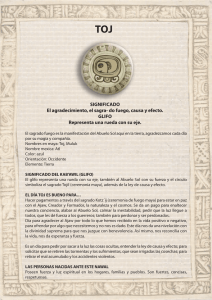
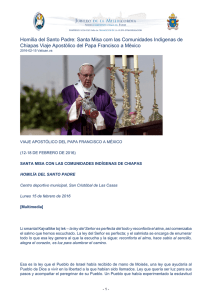

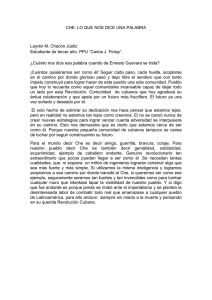
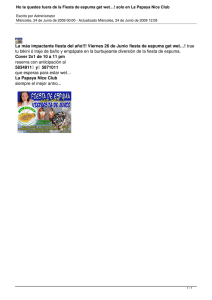

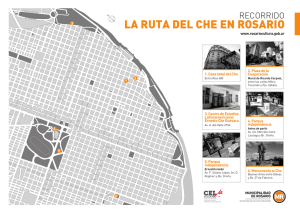
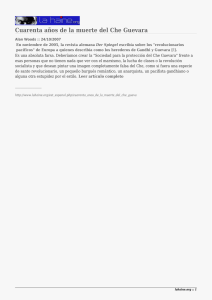
![[Libro] "El marxismo y la justicia social. La idea de... en Ernesto Che Guevara"](http://s2.studylib.es/store/data/003536401_1-0ffe0dcd9ebcd44131a00eac1da28c4f-300x300.png)